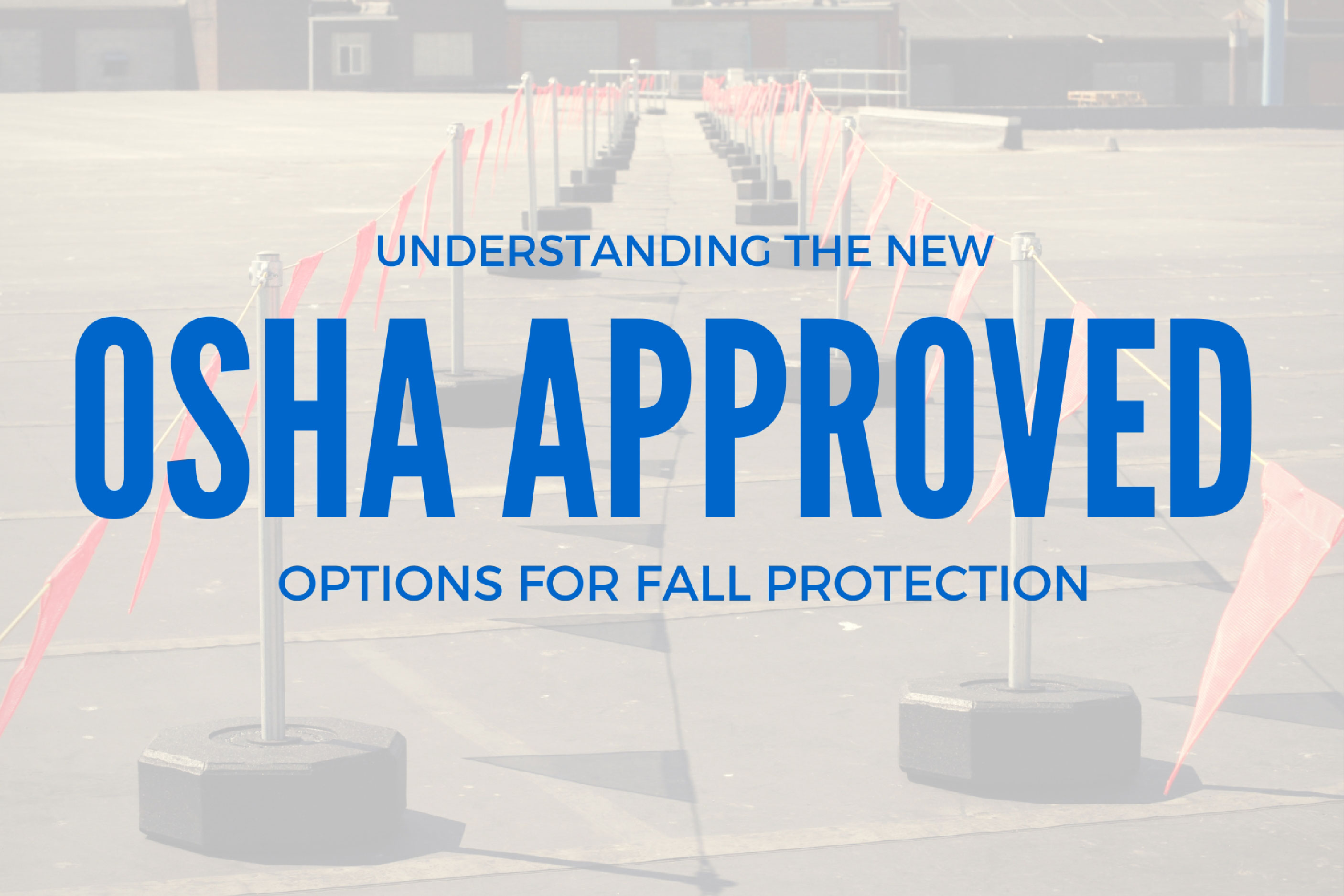Understanding the New OSHA Approved Options for Fall Protection

Late last year, OSHA published a long-awaited final rule on Walking and Working Surfaces. One of the main reasons for this update to the existing general industry standard was an attempt to bring the fall protection requirements for manufacturing, warehousing, maintenance, and other similar operations more in line with the construction requirements. To those who, at times, are governed by the construction regulations, much of the new rule will be familiar, specifically the section on Personal Fall Arrest Systems (PFAS). However, this is definitely not all that is new. Below is a guide to what has changed.
Fall Protection
Prior to this rule, the general industry regulations required that a company consider guardrails as their primary method of fall protection. While passive systems are always a great option, they are not always feasible. The new rule gives companies the flexibility to decide which method works for them, including Personal Fall Arrest Systems (harnesses, lanyards, anchor points, or what is commonly known as “tying off”). The new rule not only allows for this type of system to be used, but also lays out requirements for their performance, use, and inspection.
In addition, the rule allows for certain methods to be used in situations that can be considered “temporary and infrequent.” For example, work being performed on a low slope roof that meets the criteria for temporary and infrequent may be allowed to utilize a designated work area. This area, 15’ back from the edge may preclude the use of other fall protection equipment, as long as all of the requirements set forth in the regulation are met.
Scaffolding
Rather than update the outdated scaffolding section, OSHA now requires that employers who are using scaffolding under the general industry regulations follow the construction guidelines found in 29 CFR 1926. This is a quick, simple change that could eliminate a great deal of confusion.
Fixed Ladders
Say goodbye to cages and wells. Kind of. Over the next 20 years (based on whether or not a ladder already exists, is being repaired or replaced, or is a new installation), fixed ladders that are over 24’ in length will need to be equipped with ladder safety devices or personal fall arrest systems. Cages and wells will no longer be acceptable as they have not proven to prevent falls.
Qualified Climbers
This one only affects you if you’re in outdoor advertising, but the allowance for “qualified climbers” in outdoor advertising to climb without fall protection is gone. The phase-in timeline for fixed ladders mentioned above applies, but if their ladders have no cages or wells currently, they have 2 years in which they could choose to install those to become compliant with existing regulations. After that, they will still need to meet the timeline set forth for ladder safety devices or PFAS.
Rope Descent Systems
This part is basically taking an OSHA memorandum and making it law. Companies that use Rope Descent Systems (RDS) may not do so over 300’ above grade. It also requires that building owners provide (and employers obtain) information to show that the anchorage points have been inspected, tested, certified and maintained to meet the requirements.
Inspection of Walking-Working Surfaces
While this may seem like it goes without being said, it apparently needs to be said: employers must regularly inspect walking-working surfaces and maintain/repair them as necessary.
Training
What rule would be complete without a section on training? Most notable is the fact that employers – as in construction – must train employees on how to use, inspect, store, and maintain their PFAS. Workers in specified high-hazard situations must be trained in those hazards and the hazards associated with their fall protection equipment. As always, workers must be trained in a manner that they understand. It is the employer’s responsibility to determine what that manner is and to verify that their employees have understood the material.
While the changes may not be earth-shattering to many, the addition of the use of PFAS is a long-anticipated change that gives employers much more flexibility in determining fall protection solutions. Likewise, while ladder changes may be costly for facilities that have many fixed ladders, the timeline helps companies to spread that cost out and, in the end, replaces an ineffective system with something that will actually prevent injuries and fatalities. Some of these requirements simply make it easier by having one place to go, i.e. for scaffolding, rather than having to worry which regulations you are supposed to be following and whether or not those regulations match up. And isn’t giving employers flexibility, making things simpler and preventing injuries and fatalities exactly what we want?